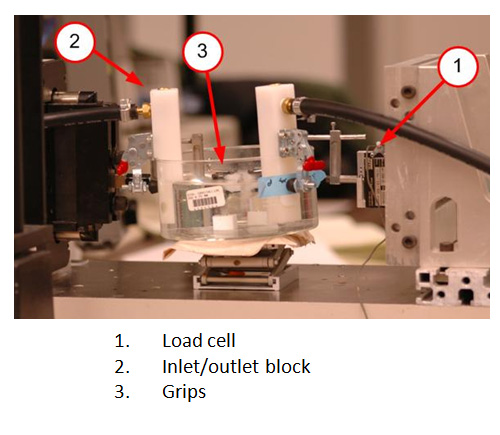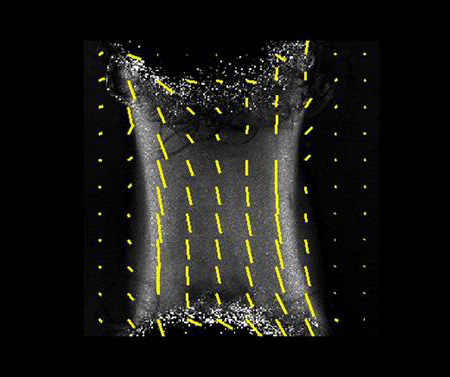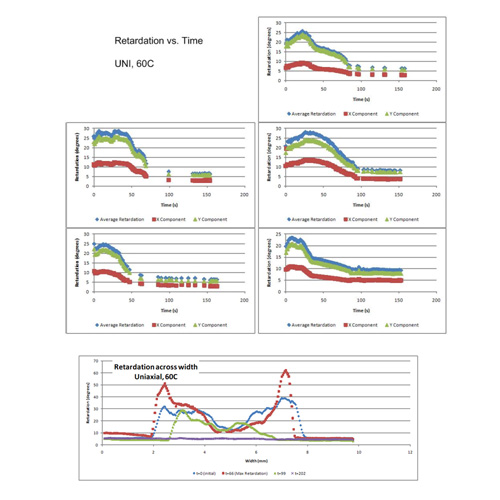BackgroundCollagen is a naturally occurring protein that is one of the primary components of connective tissue. When it forms into a matrix it gives tissue its structure and shape. Collagen acts as a scaffold for cells. When the scaffold is empty, it is soft and fragile like jello. Implanted with cells and connective pathways, it gains strength. The mechanical loading properties of the collagen matrix have been studied extensively. However, not much is known about how collagen reacts to heat under a mechanical load. This may be important as there are many medical therapies that rely on heating tissues in the human body, all of which can be viewed as being in a tensile mechanical load. ObjectiveExplore the effects of heating on mechanically loaded collagen tissues. In particular, determine if mechanically loaded collagen fibers denature slower than unloaded ones (i.e. preferential denaturation). ResultsData was gathered using a custom built, noninvasive imaging system. It used polarized light and the amount which it slowed to generate collagen fiber alignment maps. Alignment maps were collected for collagen gels under various thermal and mechanical loads. One interesting effect observed was that alignment tended to increase in the mechanically loaded samples prior to denaturation. Despite the findings there was not enough evidence to prove the preferential denaturation hypothesis. Highlights
|

|

